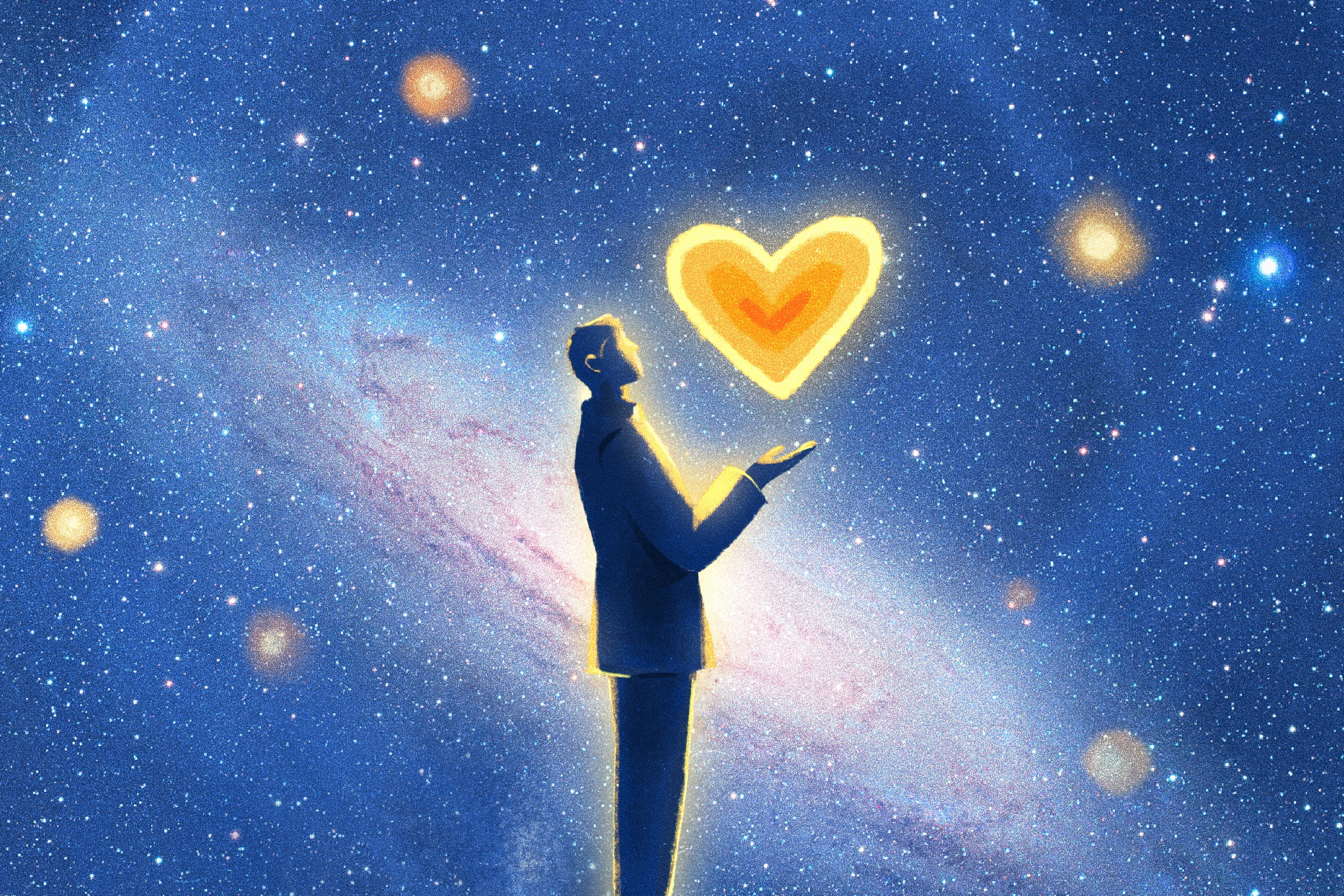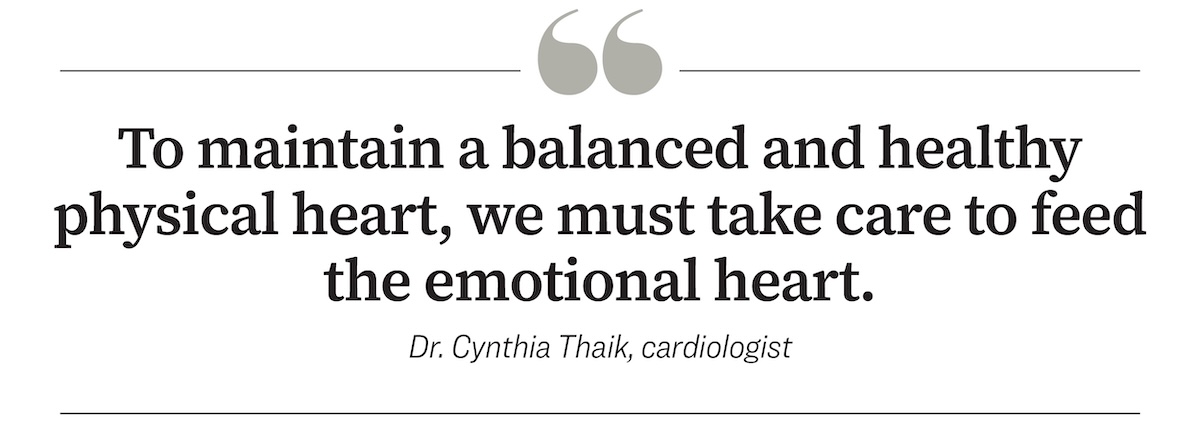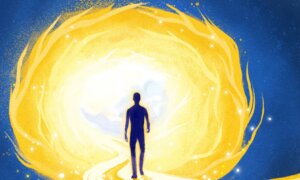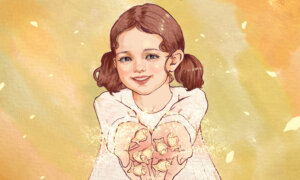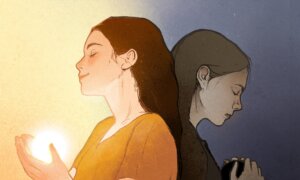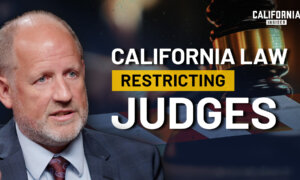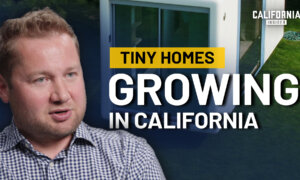Dr. Eben Alexander lay in a hospital bed, his mind slipping into a deep coma as his brain was ravaged by bacterial meningitis. His chance of survival was only 2 percent.
For the next seven days, his brain showed no activity. By every medical standard, Alexander, a distinguished graduate of Duke Medical School and a Harvard-trained neurosurgeon, should not have returned. And yet, he not only survived, but he also emerged from the coma with a story that would change his life and stretch scientific explanation.
While in the coma, he left his body and saw himself floating above a landscape of vibrant light and color—a phenomenon referred to as a near-death experience (NDE) in medical literature, as covered in a previous article.
During his NDE, he encountered a radiant woman who delivered a message he would never forget: “You are deeply loved and cherished forever. You have nothing to fear. You are richly cared for.”
Alexander believes his survival wasn’t just a stroke of luck. Love, he says, was the force that pulled him back from the brink of death.
But can love, an emotion often dismissed as poetic or sentimental, really hold power over life, health, and death?
A Medicine Beyond This World
Alexander’s life was highly desirable by most standards. He was a successful neurosurgeon who spent 15 years on the faculty of Harvard Medical School, authored more than 150 scientific publications, and held appointments at renowned institutions.
Beneath the surface, however, a silent narrative played out. He had been adopted at birth. Though raised by loving parents, he harbored a gnawing sense of abandonment.
“I had this subconscious belief that maybe I didn’t even deserve to exist—that maybe I didn’t deserve love since my own mother had given me away,” he told The Epoch Times.
He recalled that during his NDE, he felt an overwhelming emotion of “tremendous love”—pure, unconditional, and absolute. This love cured the deepest scars of his past and left him with the message that “love is the ultimate creative force in the universe.”
Aligning with this force, he said, can lead to “wholeness and healing.”
Love Under the Microscope
While Alexander’s experience is extraordinary, it is not isolated. Science continues to develop an increasingly nuanced and comprehensive understanding of love and its effects on the body.
In a seminal experiment published in JAMA Psychiatry, researchers found that couples with warm and affectionate interactions healed 40 percent faster from minor blister wounds than those who argued or demonstrated hostility.
The study suggests that positive emotional states generated by loving relationships activate the parasympathetic nervous system, often called the “rest and digest” system, which can reduce inflammation and accelerate cellular repair. By contrast, hostile relationships inhibited healing by 60 percent, likely because of elevated stress hormones such as cortisol.

In a 2005 seminal experiment, couples with warm and affectionate interactions healed 40 percent faster from minor blister wounds than those who argued or demonstrated hostility. (The Epoch Times)
Dr. Cynthia Thaik, a Harvard-trained cardiologist and medical director of Holistic Healing Heart Center, told The Epoch Times that love heals at a biochemical level by releasing oxytocin, a neuropeptide often called the “feel-good” or “love” hormone. According to Thaik, this hormone reduces stress and improves immune function.
Love naturally lessens feelings of pain. A Stanford University study exposed a group of participants to moderate levels of thermal pain while showing them photos of their romantic partners. This group reported significantly lower pain than those who were either shown a photo of an acquaintance or were given a task as a distraction—such as “think of as many sports as possible that do not use a ball.”
The Heart’s Calling
The heart is universally recognized as a symbol of love, and fittingly, love significantly affects the heart itself.
A study that asked 10,000 men the question “Does your wife show you her love?” found that those who answered “yes” had a 50 percent lower rate of angina pectoris, or chest pains. This reduction was present even in men with high-risk factors such as high cholesterol and diabetes.

10,000 men who participated in the study were asked the question, 'Does your wife show you her love?' and found that those who answered 'yes' had a 50 percent lower rate of angina pectoris. (The Epoch Times)
“Love heals the heart and inspires peace, harmony, and calmness,” said Thaik, who approaches heart health holistically. “In order to maintain a balanced and healthy physical heart, we must take care to feed the emotional heart.”
Indeed, love directly affects how your heart works. A study by Brooks Gump, endowed professor of public health at the Falk College at Syracuse University, showed that when people were around their spouses or partners, their blood pressure decreased. Interestingly, even if the relationship was not a particularly happy one, blood pressure still dropped.
“One of the most important components of love is trust and safety,” Gump told The Epoch Times. His and others’ research suggests that people can let their guard down when they are around someone who inspires feelings of comfort and safety. This lowered vigilance means that people won’t react as strongly when stressors appear—such as when a door slams, one hears bad news, or something unfortunate happens. This buffering quality leads to improved immunity and lowered heart disease, Gump said.
In the Absence of Love
Love can heal, yet its absence can be emotionally painful—even physically devastating.
In 2005, a group of research doctors from Johns Hopkins University wrote a study on a heart condition known as stress-induced cardiomyopathy, also known as broken heart syndrome—a nickname medical professionals don’t object to.
Stress-induced cardiomyopathy occurs after people—primarily women older than age 65—experience sudden acute emotional stress. This could be caused by the death of a loved one, the breakup of a relationship, or another distressing event.
Research reveals that these “broken hearts” often exhibit an enlarged and ballooning left ventricle. While this condition can lead to adverse outcomes, including higher mortality, it is typically reversible with appropriate care, as the affected heart muscle remains viable and capable of recovery.

Panels A and B show that during broken heart syndrome, parts of the heart stop contracting but remain viable. Panel C confirms the heart muscle in these areas is healthy and can recover. Panel D, for comparison, demonstrates permanent damage to the heart muscle from a heart attack. (Courtesy of The New England Journal of Medicine ©2005)
Truong Nguyen, an obstetrician and gynecologist, said he believes love should be at the core of medical practice. “Do no harm” is not enough, he said, suggesting that medical staff should truly care for patients with the love and attention they would show to friends or family. He told The Epoch Times that you don’t have to look far to see the absence of care in medicine, as medical errors are the third leading cause of death in the United States.
Showing love for patients promotes their safety and cultivates a positive mindset that can help them heal.
Furthermore, many modern treatments have limitations, and that’s where spirituality or belief in God may be helpful, he said. As he pointed out, this “intervention” has no negative side effects.
Love as an emotion and intervention does not have to come from a single individual. Many people feel a higher or more transcendent love, usually associated with religious experiences. A study by Jeff Levin at Baylor University examined the concept of religious love, defined as the feeling of loving or being loved by God. The findings indicated a significant association between perceived divine love and self-reported health ratings.
The Mystical Side of Love
While love’s physiological effects—such as oxytocin release and pain reduction—are recognized by science, there remains an enigmatic side to love.
People often experience telesomatic events, in which physical sensations or emotions seem to be shared across distances with those they are emotionally close to—or with those they love.
The book “The Rough Guide to Unexplained Phenomena” by Bob Rickard and John Michell tells of Hugh Perkins, a young boy who kept pigeons as pets. After falling seriously ill, Perkins was rushed to a hospital 105 miles away for emergency surgery.
As he lay recovering, he heard a tap on his window amid a heavy snowstorm. When the nurse opened the window, a pigeon flew inside and landed on Perkins’s chest. It was one of his birds, identified by a band on his leg with “167” written on it. The pigeon had never been to the hospital and could not have known where Perkins was.
A case file in “New Directions in Parapsychological Research, Parapsychological Monographs No. 4” by Joseph H. Rush is equally compelling. The file tells of a mother who, while writing a letter to her daughter away at college, suddenly felt an intense burning sensation in her right hand. The pain was strong enough to force her to stop writing.
Less than an hour later, she received a call informing her that her daughter had suffered a chemical burn in a lab accident—a burn on her right hand. The specificity and timing of the injury make it difficult to dismiss as a mere coincidence.
These experiences seem to follow a pattern: They occur most often between people with deep emotional bonds—parents and children, siblings, spouses, lifelong friends, and even people and their pets. Further, they are unbound by physical space.
Dr. Larry Dossey, a doctor and author who blends medicine and spirituality, noted in a 2019 article in the journal Explore that this phenomenon mirrors what physicists observe in quantum entanglement, in which particles remain connected across vast distances. When one particle changes, the other reacts instantaneously, as if they are part of the same system.
Resonance offers another possible explanation. In physics, resonance occurs when two systems vibrating at the same frequency amplify each other’s effects—such as when a singer’s voice shatters glass by matching its vibrational frequency.
This principle goes beyond objects. When two people are deeply connected, their emotions and thoughts may align in a similar resonance, reinforcing and amplifying each other’s experiences.
Experiments using random event-generating machines and devices designed to produce unpredictable results, such as flipping a coin repeatedly, suggest that emotional bonds may influence how they work. When emotionally bonded couples focus on these machines together, the outcomes become slightly less random.
These ideas are not novel. Across cultures, religions, and traditions, love is seen as a unifying energy that transcends and binds individuals.
Alexander experienced the force of love during his NDE. He explained that he felt a vast interconnectedness—an underlying reality in which separation is an illusion.
“In the presence of love, I understood that we are all one,” he said. “The divisions we see in life—between self and other, mind and body—fall away.”
Love in Practice
“Love really is your best medicine,” Thaik said. So, how can we harness it?
“We have to start at the source—ourselves.” Self-love and self-care are the first steps forward, she said.
She suggested treating yourself as you would a dear friend—allowing room for mistakes, practicing self-forgiveness, and showing yourself the kindness you would offer others. When facing setbacks, resist self-blame, as self-blame is associated with anxiety, depression, and shame. Instead of asking “What’s wrong with me?” try reframing: “This is a learning opportunity,” or “I am growing through this challenge.”
Use affirmations such as “I am worth it” or “I am uniquely needed in this world.” Pair this with a gratitude journal, jotting down one thing you appreciate about yourself each day. Over time, these small acts build a resilient, positive self-image.

(Illustration by The Epoch Times)
Love for others, as research shows, can be intentionally cultivated. A study in the journal Mental Health, Religion & Culture found that if individuals silently repeat a phrase embodying love and patience, such as “love your neighbor as yourself,” it fosters compassionate love. Additionally, practicing selflessness and performing acts of kindness can strengthen our ability to act from love rather than ego, according to the study.
Alexander said the universe is built on love, and we can align ourselves with it. He suggested that simple practices such as walking through nature or simply giving a helping hand to others can facilitate experiences of love. He especially recommended cultivating the love between parents and children, as this relationship reflects and fosters the unconditional nature of love.
As a physician who advocates for love, Dossey counseled that love isn’t an emotion defined by science.
He cited Carl Jung, the famous psychiatrist, on the nature of love: “In all my medical experience as well as in my own life, I have again and again been faced with the mystery of love, and have never been able to explain what it is.”
“Just as the finger that points to the moon is not the moon, all our scientific papers and ruminations will never really capture love,” Dossey said. “The more we explore it, the more its mysteries deepen.”
“Have you experienced a decrease in feelings of pain when you’re around your spouse? Join our discussion here.
